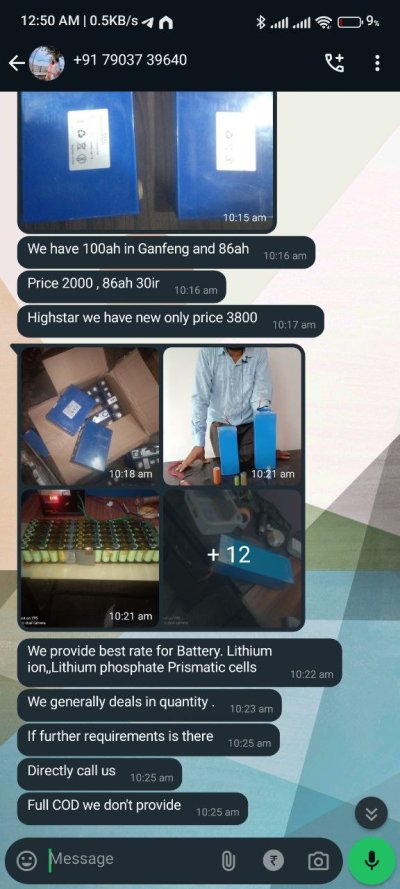goDofWar_skr
Adept
Sounds interesting..Li-ion/LiFePO4 battery and a BMS
could you please let me know what it does and how one would learn more about it..
Sounds interesting..Li-ion/LiFePO4 battery and a BMS
There's a lot of videos on YT about doing this. Basically, you'll get much higher energy density and lifespan than a lead acid battery. With LiFePO4, it should be safer too.Sounds interesting..
could you please let me know what it does and how one would learn more about it..

 quartzcomponents.com
quartzcomponents.com
Another problem is drawing too much current from it, because LiFePO4's are mostly limited to 0.5-1C where C is the capacity of the battery.
Great! In that case, I'll pull the trigger on them and post an update here when I'm done with the project. It sounds fun.I really like those cells and they would be well suited for a low-load UPS with the BMS you found. I considered them for a powerwall project but this being India, the really good deal is in used LFP cells - they're usually priced at under 2000 for a 80Ah cell! (India has pretty great second-hand pricing for basically everything).
Ah, that's an easy/clever solution! I'll need to test the cheapo APC 900VA I bought to see if it does that or not. But based on what others were saying, it doesn't seem to power on with a dead battery. I assume that means l'll have to do this modification for it. Thanks for the heads up.However, some people on youtube have noticed some BMSs will block the UPS from powering on after the pack is drained completely. They got around this by installing a push button that'll bypass the BMS wiring to allow the UPS to sense that there's a battery so that it will power on. This is for UPS models that need a battery to turn on even if they're connected to the mains ac. Most UPSs will let you turn on without a battery with a long press of the power button.

No worries. I contacted the MDS guy and he quoted me 7.5k for a Hithium 280Ah "10,000" cycle cell and 3.5k for a Gotion 102Ah cell. I'm thinking of just getting 4x Hithiums for now and calling it a day. They're not that much more expensive than getting lead acid of the same capacity and probably more reliable in the longer term than these used cells you mentioned -- or so I would assume.@variablevector sorry, I forgot about your PM and your reply here.
The dealer is https://rojgarbox.com/ I last spoke to them in January:
View attachment 204824
The battery pack looks like that because the 32mm cell spacers I got were too small for these "32140" cells.
Unfortunately, I found out that the APC UPS is trying to charge the batteries at 14.62V which is 0.02V above what the BMS on the LFP cuts off the battery at.
So a 3x improvement in backup time with ~3.5k in parts.
Nice! and it will last longer than the lead acid batteries too I suppose..So a 3x improvement in backup time with ~3.5k in parts.
Yeah. But most things on robu seem perpetually out of stock. Seems the only way to get these spacers right now is directly from China.Sorry, I forgot to mention this, yes those cells need different spacers and robu.in usually has them in stock (out of stock now): https://robu.in/product/2-x-32140-33140-battery-holder-with-33mm-bore-diameter/
Some sellers differentiate these cells from the other 32650/32700 ones by calling them 32140FS. UTL actually uses these cells in their products, I remember seeing them in a youtube video about their testing lab.
That's what I was thinking too. I was going to add some XT90 connectors and make the battery detachable anyway, so adding some longer cabling seemed reasonable. But that is the same as adding a low resistance resistor in series, right? And in order to get a voltage drop of 0.03V at 2A charging, you would need a resistance of 0.015 Ohms. But while discharging at 20A, that would create a voltage drop of 0.3V. That seems not ideal. It probably depends on whether the gain in the top end would justify the loss on the bottom end.This sounds like it should be fixable, either with a longer cable or by perhaps adding/adjusting a trimpot inside the UPS? This has been possible on other models: http://www.jjoseph.org/notes/apc_smartups_battery_float_voltage
